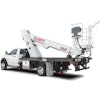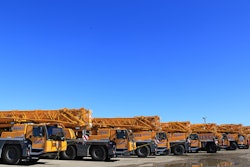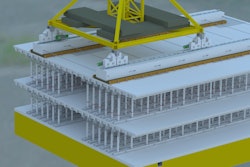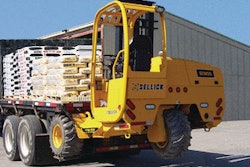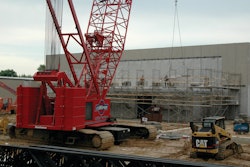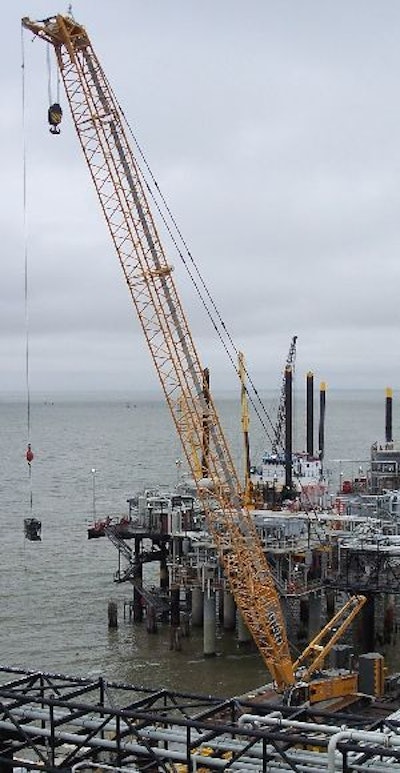
Flatrock is a multiple reservoir deep-gas discovery below the Chevron-operated Tiger Shoal Field in the Gulf of Mexico, 12 miles southwest of Vermilion Bay. Gas produced at Flatrock is processed at the South Marsh Island (SMI) Block 217 platform.
Already the most productive offshore natural gas handling hub, SMI Block 217 just got bigger. Prior to expansion, Block 217 was already producing double the Gulf of Mexico average for a single platform. Following expansion, carried out between February and July 2009, its capacity has been doubled.
"This one platform alone could increase US natural gas production by 13%," says J.P. Quackenbos Jr., president of Cajun Maritime LLC, Chevron's main contractor on the Flatrock Expansion Project.
Cajun Maritime LLC, headquartered in Baton Rouge, LA, is the specialized marine subsidiary of the civil and mechanical contracting group Cajun Industries. The company prides itself on delivering a quality service to its customers with a focus on maintaining a safe working environment at all times.
Naturally, it demands the highest standards in the equipment that it uses. To undertake the Flatrock Expansion Project, Cajun Maritime purchased a new Liebherr LR 1300 lattice-boom crawler crane from Liebherr Nenzing Crane Co., of Houston, TX. According to Quackenbos, this machine was selected on the basis of quality, lifting capacity and price.
"This crane has a number of features that are attractive to us," he says. "The sealed bearings, stainless steel, zinc-plated surfaces and special coatings make it particularly suitable for the maritime market, and there are a number of safety mechanisms that we like. We also like the big engine, high line pull and the load chart - it holds its capacity well as the radius increases."
Delivering both capacity and safety
The LR 1300, rated at 330-ton (U.S.) capacity, was introduced by Liebherr Nenzing at the 2007 Bauma exhibition in Munich, Germany. "With its 600-hp engine and 33,000-lb. winch, it is the powerful crane in its class on the market today," says Scott Moreland, VP Sales at Liebherr Nenzing Crane Co. "With the new generation Liebherr LICCON computer, it also has the unique ability to move the main boom and luffing jib simultaneously while under load."
On the Flatrock Expansion Project, Cajun Maritime required the LR 1300 for several major installations, including 32-, 42- and 76-in.-diameter pipe piles, a new service crane and a water treatment deck platform.
"There were several lifts that we could not have made without a 330-ton-capacity crane," says Ronald Mashon, Cajun Maritime's Construction Manager. Among these big lifts was a 132,600-lb. separator package set at a radius of 66 ft. and a 156,941-lb. well deck placed at a radius of 60 ft.
Although the Liebherr was mounted on a barge, Cajun Maritime's engineered ballast plan ensured that the barge maintained a zero degree list at all times, allowing the crane to lift to its full load chart with no reductions.
Mashon also points out some of the safety features of the crane that he particularly liked. "The LR 1300 has many safety features that other cranes of this size do not offer," he states. "The reaving winch is used to install the lifting cables. The small-diameter reeving winch cable is much easier to handle than the old method of hand pulling that is required on other brand cranes. Riggers are not required to walk the boom of the crane.
"The cab computer can be programmed to work within predetermined ranges," he continues. "This is useful in low overhead clearance work and completely removes the human error factor.
Handrails on the rooftop make it safer to work on the main drums. "And, of course, having all electronic-over-hydraulic controls eliminates the risk of accidental load loss often associated with old-style friction cranes," he states.
Since completing its work on Flatrock in July, the crane subsequently spent a couple of months working on a project in Galveston Bay, Houston, alongside Interstate 45, before returning to work at Flatrock in October where Cajun is completing further expansion activities.

